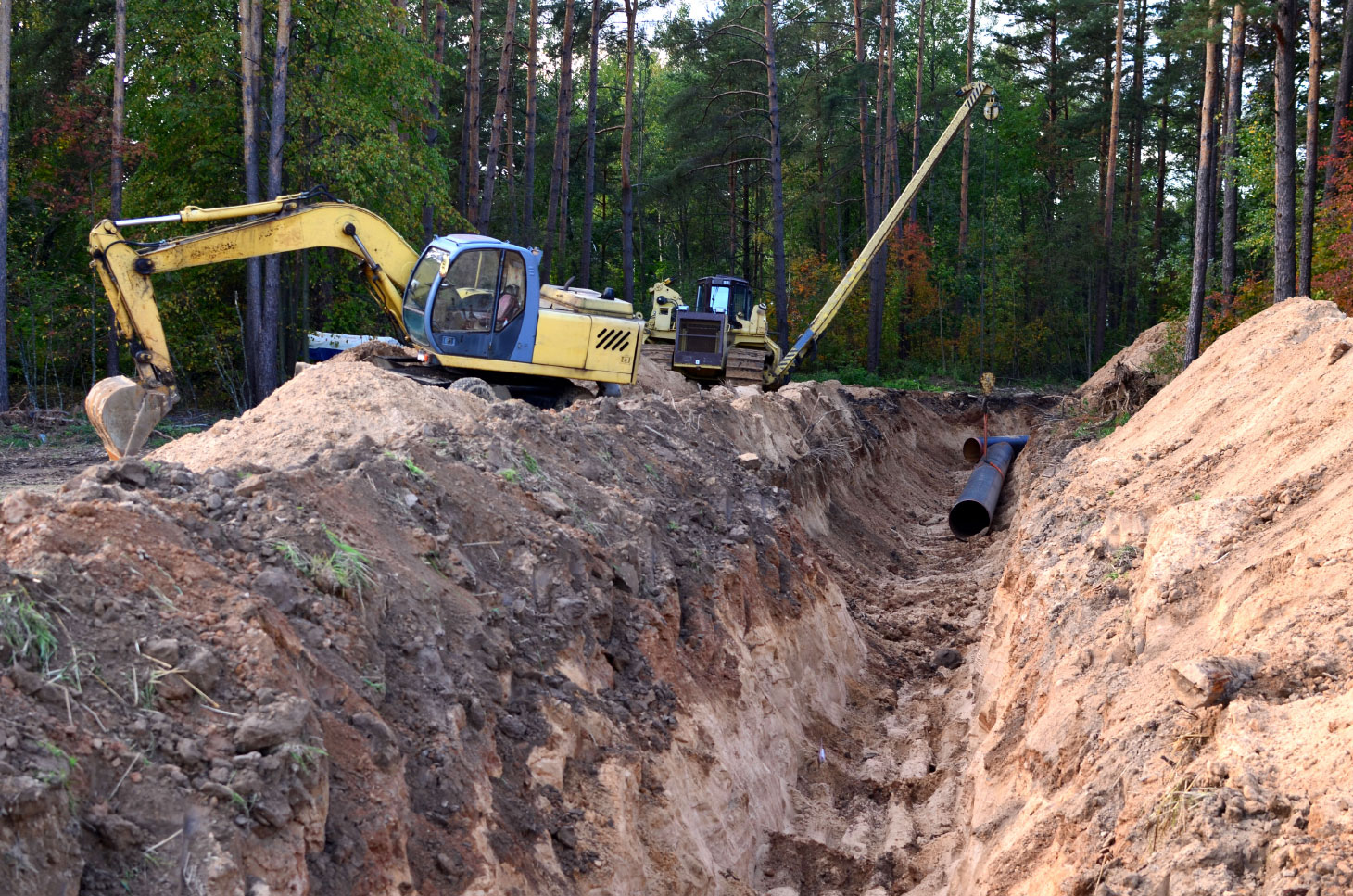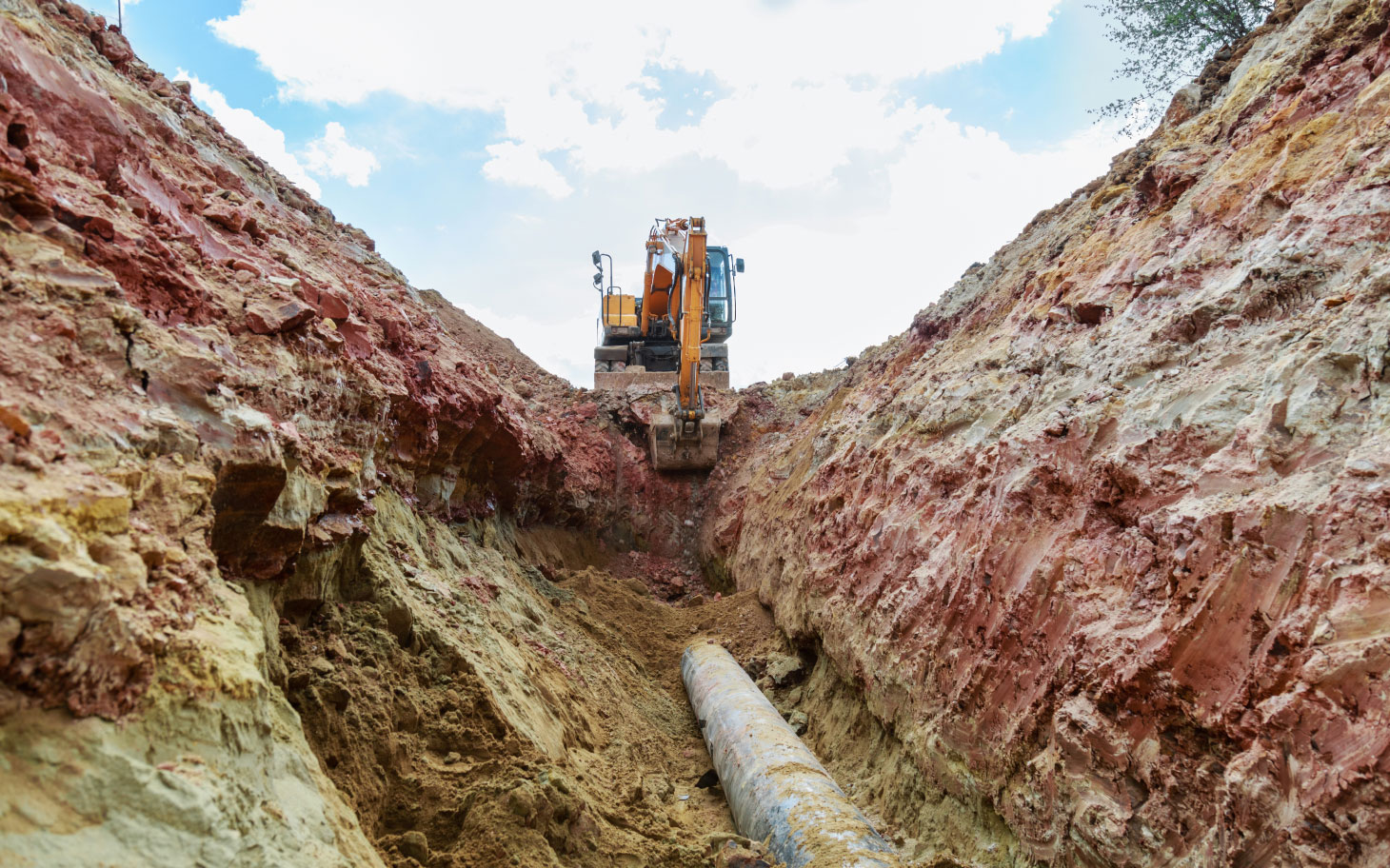
Trenching is a vital facet of any heavy construction project, but it can be dangerous. It’s essential for safety to be top-of-mind when companies embark on trenching as part of their project. Fatalities are extreme cases, but other incidents see serious wounds, lacerations or broken bones.
“Common injuries from trenching typically occur when there is ground fall as a result of changing conditions, or collapse of the trench because it was not sloped properly for the soil type conditions,” said Jonathan Sherman, director, prevention at Saskatchewan Workers’ Compensation Board. “Falls are also a risk, either during access or egress, or by those working next to the trench. There is the risk as well of the environment becoming oxygen deficient as a result of fumes replacing the air, if the trench is not properly ventilated, or when working in more confined spaces like with a trench box, particularly around septic systems.”
Safe procedures
Recognizing the risks and hazards that trenching carries, there are several preventative measures that companies must take.
“The type of soil determines the slope of the trench walls based on the depth of the trench,” Sherman said. “Conducting a pre-job safety analysis or hazard assessment before work begins each day, or when conditions change, will also help to prevent work being done in a trench that is unstable.”
Alongside soil evaluation are other factors that are part of the worksite, including underground services. This may include gas, communication and power lines, as well as sewer and water mains. In “Safety in Excavations and Trenches,” WorkSafe Saskatchewan outlines that, “underground services must be identified and accurately located before excavation work begins.”
“Conducting a pre-job safety analysis or hazard assessment before work begins each day, or when conditions change, will also help to prevent work being done in a trench that is unstable.”
Jonathan Sherman, Saskatchewan Workers’ Compensation Board
Sherman says it’s essential that companies not only examine the ground before a project begins, but perform ongoing analysis as work continues, especially if/when hazards shift.
“When conditions change, particularly when it rains, any excavation should be inspected to ensure that the water has not caused damage, eroded the edges or caused other risks to the integrity of the trench,” he said. “Continuous supervision of work should also be done to ensure those in the trench are protected at all times, as well as to keep others from entering the trench accidentally.”
Conditions are part of the considerations – worker communication is another piece of the puzzle. As a project continues and as depth increases, supervision and dialogue become vital.
“Where workers are in a trench more than 1.2 metres deep, an employer shall ensure a competent worker is stationed on the surface to alert workers in the trench of any unsafe conditions or assist in an emergency,” said Bryan Lloyd, executive director of the Government of Saskatchewan’s Occupational Health and Safety, a division of the Ministry of Labour Relations and Workplace Safety.
Just as important is knowing that there are inevitabilities in trenching, and one of those can be deadly – cave-ins. As described in “Safety in Excavations and Trenches,” cave-ins can be caused by multiple factors such as moisture content, vibration and adjacent weight. The effects of cave-ins can be devastating, with only moments to avoid injury without proper planning.
“Many victims are suffocated after being buried in a cave-in,” the document states. “Survivors often receive severe crushing injuries. Once a trench or excavation begins to cave-in, workers may have only seconds to escape.”

Big assists
Like many construction areas, trenching has numerous advancements that companies can use as part of their safety procedures.
Lloyd says these opportunities include advancements in temporary protective structures. Compared to older apparatus, these constructs are lighter, making them easier to move, yet they still function to the high standards necessary for trenching.
Lloyd says there are benefits for companies that are contemplating upgrading this part of their equipment.
“Temporary protective structures are being used more and more every day as it cuts down in overall excavation costs and [is] less invasive in urban communities,” he said. “When it comes to open trenching, we are seeing the use of more ‘V’ buckets. Not only does the bucket hold more yardage of material, it also assists in the cutting back the walls of the trench and having less loose material build-up.”
Preparation, training, ongoing communication and proper equipment must be used by companies to reduce the risks of trenching. All businesses should keep an integral mission at the forefront of all operations – that workers are to return home at day’s end in the same condition they arrived in. ![]()